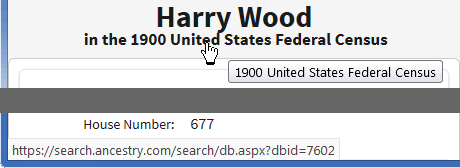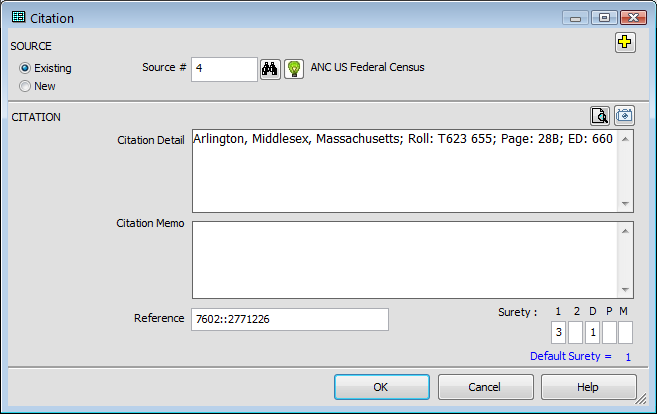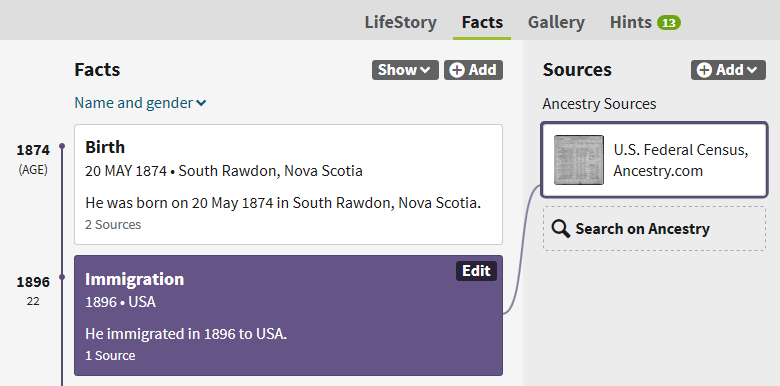APID Identifiers
When Ancestry.com imports a GEDCOM file, it recognizes custom _APID subrecords that supply an APID identifier to link a citation to an entry in an Ancestry.com database. The APID identifier is only understood by Ancestry.com, so you should leave Ancestry APID Location set to "None" if you are not exporting to an Ancestry.com tree.
Finding APIDs
You may use the APID Utilities below to extract APIDs from Ancestry.com URLs.
An APID includes a database number and a record number in the format "database::record", for example, "7602::2771226". Ancestry's web pages do not make those values obvious, but they are usually present in URLs for record pages.

In the example URL above, the dbid is the database ID. The h= value is the record number. Those are the usual URL parameters for the database and record number components of the APID. In some cases, and especially for some common databases, the dbid parameter is replaced by a db= parameter, such as db=1900usfedcen. For example:
... sse.dll?db=1900usfedcen ...
You cannot use the value of the db= parameter in an APID; the database number in the APID must be a numeric database ID. To determine the database ID, you can inspect a link to the database that appears at the top of the record display page. As shown in the screenshot below, hover your mouse over the link to the database information page that is under the person's name when viewing a record in the database:

In the screenshot, Firefox shows the URL for the link as a hint near the bottom of the page. Other browsers may show the URL somewhere else, or not at all. If you do not see it, right-click on the database name and select "Copy Link Location". "Copy Link Address", or whatever command your browser uses to copy the URL. Paste the URL into a text editor window (such as Notepad) so you can see the database ID number.
In the screenshot above we see that Ancestry's database ID for the 1900 US Federal Census is 7602.
Entering APIDs in TMG
You may enter the APID in one of several locations in TMG: Citation Detail, Citation Memo, Citation Reference, or a Source element. I recommend using the Citation Reference as that value is not loaded by most GEDCOM readers, and using it to enter a value that identifies a record is a typical use for the Citation Reference field.

TMG to GEDCOM Configuration
To direct TMG to GEDCOM to search for APID values in TMG citations, use the Ancestry APID Location property in the Sources section. If you enter the APID in the Citation Reference field, set the Ancestry APID Location property to "Citation Reference".
The Ancestry.com templates provided with TMG to GEDCOM have the Ancestry APID Location property set to "Any". If you only use one TMG location for APIDs, such as the Citation Reference field suggested here, change the Ancestry APID Location to specify the location you use. That will reduce the chance that TMG to GEDCOM will misidentify some other value as an APID.
Ancestry.com Results
After uploading a GEDCOM file to Ancestry you will see "Ancestry Sources" in the profile for people who have TMG citations with APID values. Here is a screenshot showing the result:

Clicking an "Ancestry Source" will open a source citation window that includes text fields from the Ancestry.com database record and links to the record, and an image of the record if one is available.
APID Utilities
Use this section of the page to convert APIDs to and from URLs.